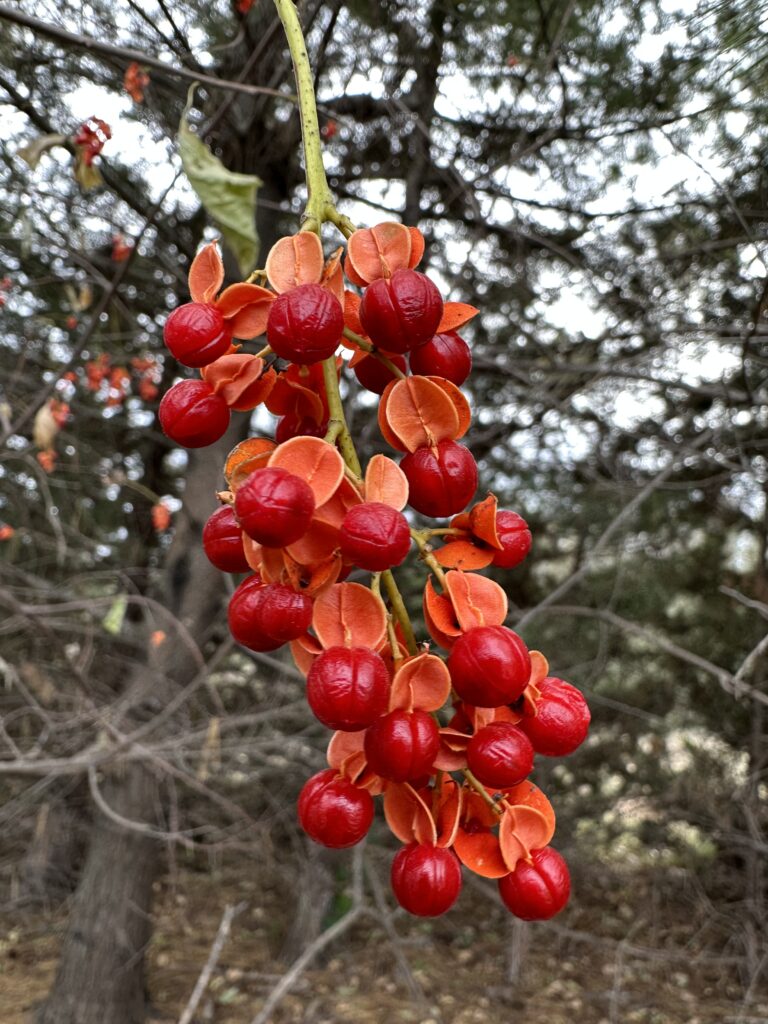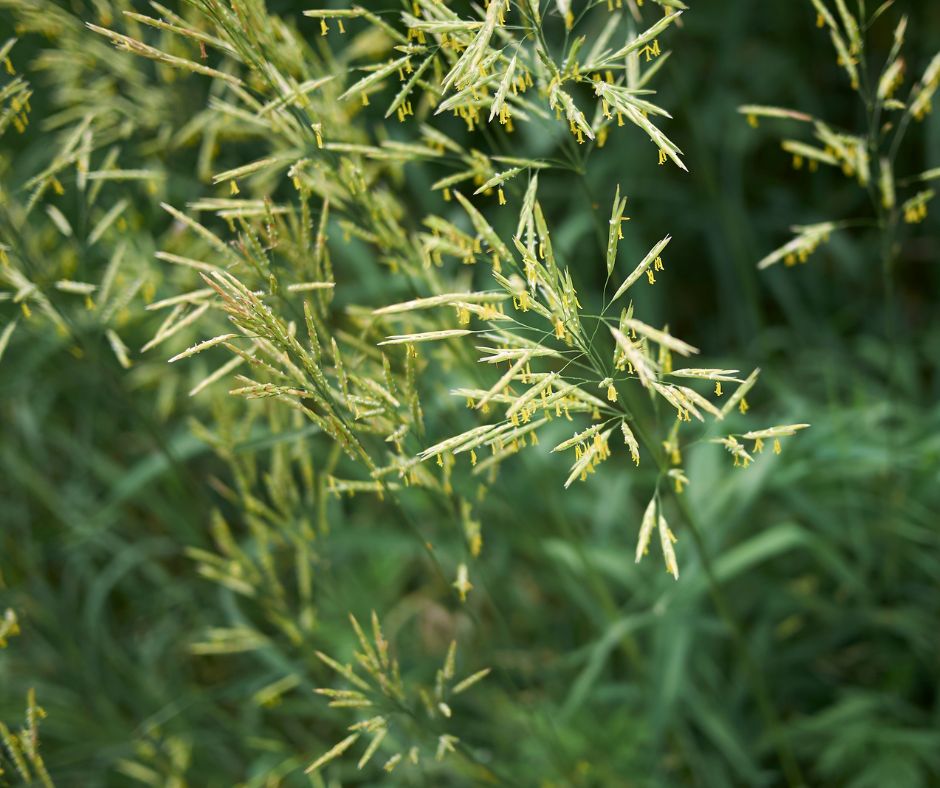Eyes on the Ecosystem: Invasive Awareness and Early Detection
article by Kayla Johnson, Conservation Specialist
Did you know that the last week of February is Invasive Species Awareness Week? Do you know why awareness is so important?

Oriental Bittersweet, Celastrus orbicularis
Stopping invasive species early on, before it becomes a major problem will save time, effort, money, and most importantly prevents the loss of precious habitat.
Invasive species are constantly expanding their range. Constant monitoring and early detection can help stop invasives that make their way across natural barriers.
One example of an invasive gaining ground across the United States is Oriental Bittersweet, Celastrus orbicularis. It is a woody, perennial vine that favors sunny areas with occasional trees or shrubs to climb – structures created by our oak savanna restoration. It can easily be confused with the native American Bittersweet, Celastrus scandens, a threatened species.
An initial search on the USDA database reveals Oriental Bittersweet to be heavily present in the east and only as far west as Iowa. However, in the past few years it was detected at Neale Woods Nature Reserve, and it is already proving to be an expensive and persistent problem plant.
Managing Oriental Bittersweet

American Bittersweet, Celastrus scandens. Photo by Drew Granville.
There are several perspectives on which combination of management strategies is best. Fontenelle Forest’s staff are using various approaches to eliminate the aggressive weed:
- In the dormant season, November through March, we cut and spray the tiny stumps of the Oriental Bittersweet with a Triclopyr 3 herbicide and water mixture.
- Then in late May we will foliar spray, meaning spray the leaves of any of the plants that survive with a mixture of Triclopyr 4, crop oil, and water.
- In the weeks following, we will mow any drivable areas, to help surrounding native plants compete against the invaders.
Since native plants grow later than most of our invaders, mowing stresses more developed invasive plants, and provides extra sunlight to native plants, which are adapted for grazing. Year-round, we continue to check the area for additional invaders.
Creating Resilient Habitats
All this work takes considerable time. The earlier we spot a novel invasive, the less effort will be required to eradicate it. Frequently, eradication becomes an impossible goal.
For example, European Brome, Bromus inermis, will always be present in the system. On the bright side, healthier ecosystems, that have their natural cycles and components in place, are more resilient to invasive species.
Higher diversity vegetation is more effective at competing against invasive species than a low diversity area, thus keeping the invader somewhat in check.
The Invisible Advancement of Invasives
Early detection of novel invasive species to an area is the single most valuable asset in tackling invasive species and areas like Fontenelle Forest are constantly inundated with new inputs to the system. Often, invasive species are transported or strengthened without the public realizing. Below are a few ways this spread happens:
- Flooding along the Missouri River relocates the seeds of invasive species around its shore from states away.
- Homeowners in the surrounding Omaha and Council Bluffs areas plant new “showy,” “good ground cover,” and ornamental plants that turn out to be invasives within a matter of years.
- Dogs and cats carry seeds in fur, taking plants from a neighborhood to outdoor recreational areas.
- Agricultural equipment spreads invasive species from one field to another.
- Construction equipment and human transport relocate a problematic plant to locations hours away on boots and in tire treads.
- Climate change is paving the way for invasive species to inch their way northward as winters become milder, and thus more hospitable to a wider range of plants.

European Brome, Bromus inermis
Practicing Invasive Species Awareness
If you notice that something in your neighborhood has established and is spreading successfully, take a moment to determine what it is and whether it is a native or invasive plant.
A great resource for this is the for this investigation is the USDA plant database, found at plants.usda.gov. Paid for by your taxes, this excellent database provides copious information about a huge variety of plants. A search by the scientific name of the plant will provide the best results. The resource details everything from a species’ native or invasive status to its tolerance to salt and fire.
One especially valuable aspect of the USDA plant database is the range map, which displays where an invasive species has spread, or the native range of where an indigenous species to the United States is known to occur. Data for many species will detail its range of occurrence all the way down to the county-by-county level. If you discover a new invader to the area, you can report it to the Nebraska Extension Office by phone at 402-444-7804 or email douglas-sarpy@unl.edu.
Did you know that the last week of February is Invasive Species Awareness Week? Do you know why awareness is so important? Stopping invasive species early on and before they overtake an area, is a task that begins with YOU!


